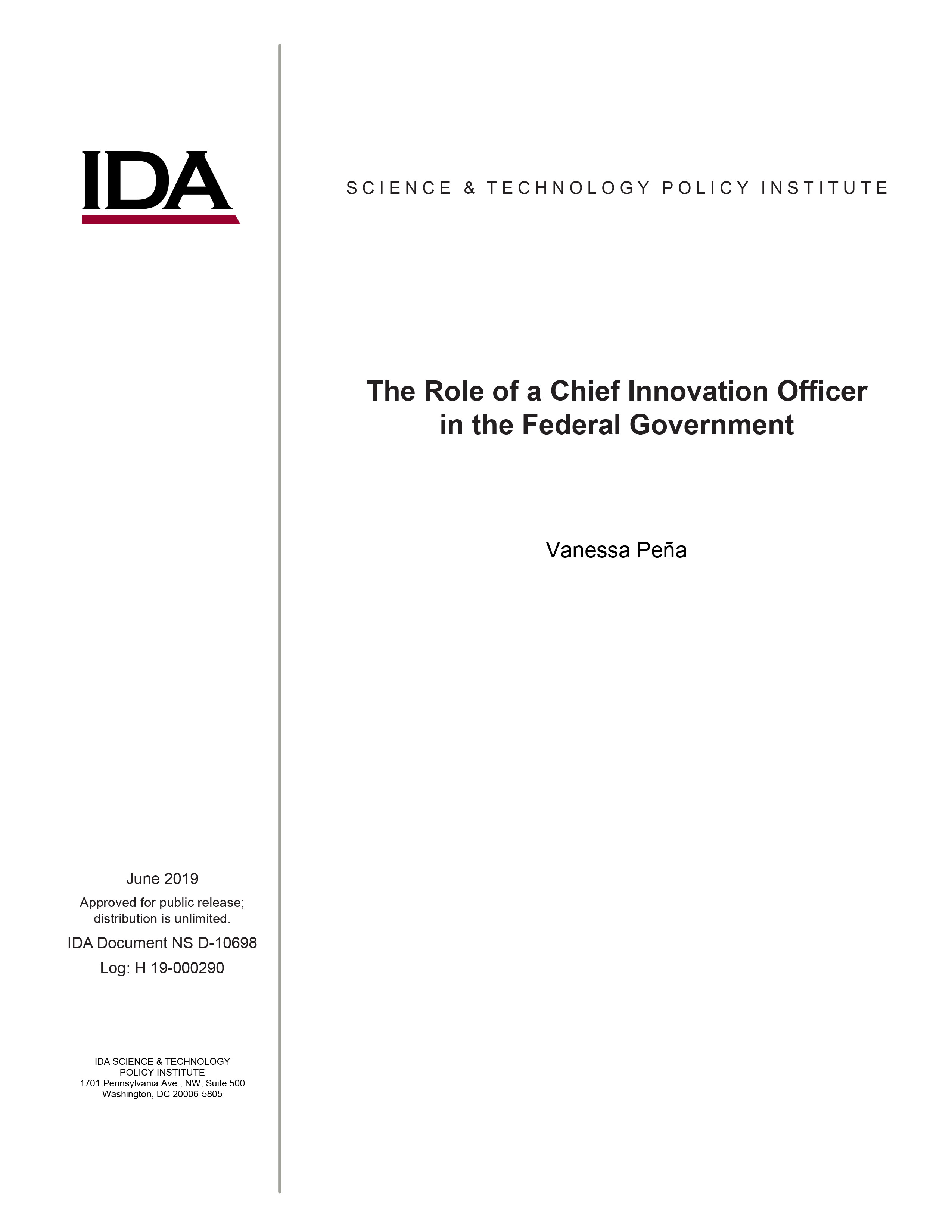In March 2016, the Office of Science and Technology Policy (OSTP) requested that the
IDA Science and Technology Policy Institute (STPI) describe a set of approaches to improve
innovation in and the effectiveness of the Federal Government. The innovative approaches
identified create new processes, products, services, and methods of delivery; have been
implemented or are in the initial stages of implementation; and have led to improvements in
outcomes, efficiency, effectiveness, or quality related to Federal Government activities.
The objective of this project was to describe the lessons learned from the implementation of innovative approaches and identify opportunities for how to support the scaling up of these approaches throughout the Federal Government. The Role of a Chief Innovation Officer in the Federal Government report describes the varied roles of the CINO, the rationale for their establishment, ways to create such a position in the Federal Government, including identifying and sourcing potential candidates, and how to facilitate their success.
Prior to its publication online in 2019, this report was an internal Federal resource for Federal Government employees. It was published online to help benefit Federal and non-Federal communities alike. Because this report was written 3 years prior to its 2019 online publication, some of the URLs referenced may no longer be valid.
The objective of this project was to describe the lessons learned from the implementation of innovative approaches and identify opportunities for how to support the scaling up of these approaches throughout the Federal Government. The Role of a Chief Innovation Officer in the Federal Government report describes the varied roles of the CINO, the rationale for their establishment, ways to create such a position in the Federal Government, including identifying and sourcing potential candidates, and how to facilitate their success.
Prior to its publication online in 2019, this report was an internal Federal resource for Federal Government employees. It was published online to help benefit Federal and non-Federal communities alike. Because this report was written 3 years prior to its 2019 online publication, some of the URLs referenced may no longer be valid.

